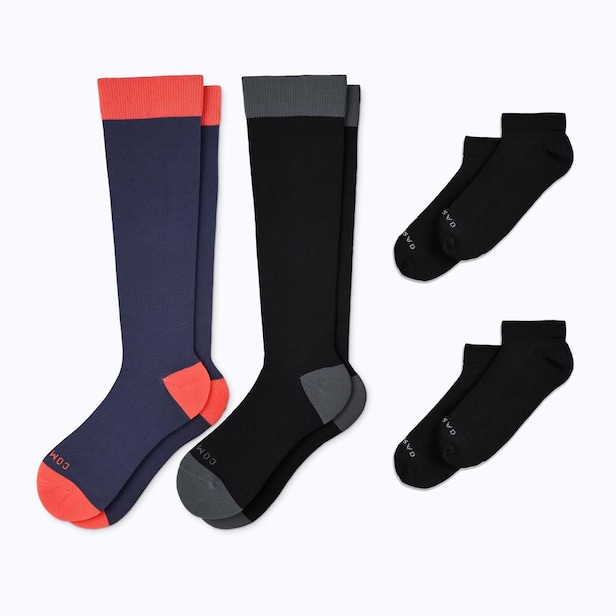Products You May Like
Sore, achy feet are the last thing you want to deal with on the golf course. Sure, back pain gets a lot of attention for plaguing golfers, but foot pain is a common ailment for us, too. So we asked around for some simple solutions for golfers, and it turns out something as simple as a quick change of socks might be able to provide relief. Compression socks have been a popular tool for professional athletes and runners for injury prevention, pain management and recovery. Sock brands are working to smash the stigma that compression socks are just a medical product for the elderly.
With an increase of education on the benefits of compression and a ton of design upgrades, compression socks may be your new on-course secret weapon this fall.
Related: Give your muscles a break with these recovery rollers
*All products featured on Golf Digest are independently selected by our editors. However, when you buy something through our retail links, we may earn an affiliate commission.*
“Eliminating foot pain and swelling and supporting your feet with compression can be one of the easiest ways to improve your game and feel better on the course,” said founder and CEO of Comrad socks, Andrew Ferenci. “When I hear someone is experiencing pain I like to ask, ‘What if you could feel better just by changing your socks?’ ”
Foot pain and swelling on the golf course is usually due to lack of circulation. The feet and legs are the hardest place for the heart to circulate blood to and from. Gravity is pushing down on the body and when you’re on your feet for long periods of time or have circulation issues, blood can pool in the feet to cause pain and swelling. Compression socks essentially act as an additional layer of muscle to compress veins to allow blood to flow at a higher velocity.
“Imagine someone putting their thumb over the mouth of a garden hose to create a tight, concentrated stream of water. That’s what compression socks are doing to your veins,” Ferenci says. “Compression provides a more narrow path to increase the flow of freshly oxygenated blood and nutrients to the areas of the body that need it.”
Compression socks have been around since the 1940s and were primarily only used in the medical space, until the early 2000s when the brand CEP was put on the map by triathletes and long-distance runners wearing the products at races.
“CEP took the medical design of a graduated compression sock that goes up over the calf and added materials, fibers and yarns you’d find in a performance sock,” said co-founder of Pro Compression, Eric Smith. “Before the performance world took over, compression socks were itchy, uncomfortable and didn’t come in a lot of colors.”
Smith, a former college golfer, was introduced to the benefits of compression socks through running and sought to develop a line to help golfers. He first launched Pro Compression with a knee-high sock aiming to reduce pain and enhance recovery time for golfers.
Since most golfers wear ankle socks, brands like Pro Compression and Comrad developed low-rise versions that enhance circulation in the foot to reduce pain and combat issues like plantar fasciitis. Wearing ankle socks in-round and knee-highs post round is a great way to get the maximum benefit from compression without ruining your look.
The next-to-skin fit of compression socks may take a little getting used to, but are safe to wear all day and even while sleeping. Compression is measured by millimetre of mercury (mmHg) ranging from 15-20 mmHg in over-the-counter socks and 30+ on the medical side. Aim to find a sports-grade pair with 20-30 mmHg of true graduated compression listed on the packaging.
For the average golfer, if you can handle the feeling of tightness around your foot, you’re going to experience some kind of relief whether you wear them during or post-round. Compression socks are especially useful for golfers who travel or play marathon rounds during buddies trips.
“If you’re going to, say, Bandon Dunes and playing 36 holes and didn’t wear compression socks, the first thing you should do is put them on before you go to dinner,” Smith says. “I can’t scientifically say it will shave two strokes off your game, but it is definitely going to help you feel better overall.”
More Compression Socks to Consider:


